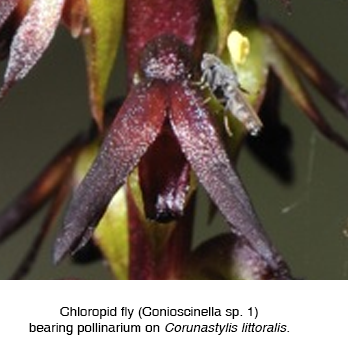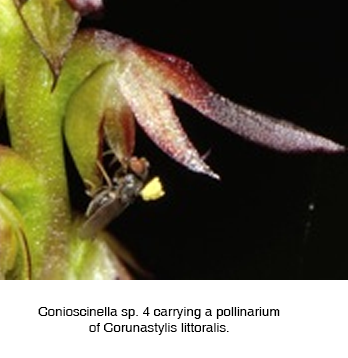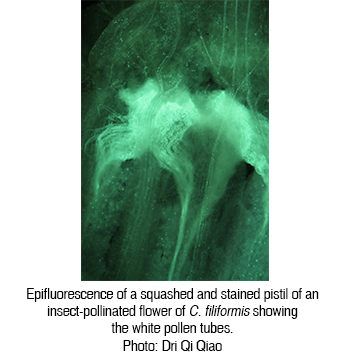Research Outcomes
Floral Presentation, Pollination and Reproductive Success in Corunastylis species
Zong-Xin Ren A, Wendy Grimm B, Brian Towle C, Qi Qiao D, Daniel J. Bickel E, Soraya K. M. Outim F, Peter Bernhardt G, H
A CAS Key Laboratory for Plant Diversity and Biogeography of East Asia, Kunming Institute of Botany, Chinese Academy of Sciences, 132 Lanhei Road, Yunnan 650201, People’s Republic of China
B 68 Ayres Road, St Ives, New South Wales 2175, Australia
C Ecoplanning Pty Ltd, 74 Hutton Avenue, Bulli, New South Wales 2516, Australia
DCollege of Agriculture, Henan University of Science and Technology, Luoyang, Henan 471000, China
E Entomology Section, Australian Museum, 6 College Street, Sydney NSW 2010 Australia
F Hawkesbury Institute for the Environment, Western Sydney
University, Richmond, NSW, Australia
G Department of Biology, Saint Louis University, St. Louis, Missouri 63103, USA;
H Corresponding author. Email: peter.bernhardt@slu.edu
In 2016, we observed and recorded floral presentation and the reproductive ecology of seven Corunastylis species in New South Wales and Victoria. Auricle lobes of the column wings of C. filiformis, C. fimbriata and C. ruppii in NSW were congested with raphides and secreted a fluid for pollinators instead of at the bases of their labella. Scent analyses identified six aromatic compounds in their flowers. Corunastylis rufa and these three species were pollinated by female Conioscinella species (Chloropidae) with 96% representing the same morphotype independent of site or flowering period. A chloropid could carry a maximum of two, whole pollinaria on the dorsum of its thorax. Rates of pollinarium removal in flowers of three species were higher than rates of pollen deposition on their receptive stigmas in NSW. Bagging experiments showed low rates of self-pollination and no fruit set in three species. Inflorescences of four species exposed to chloropids showed variable rates of conversion of flowers into fruit. Corunastylis ciliata (Vic.) showed the highest rate (91%) while C. ruppii had the lowest (35%). Seed set also varied in three species with the lowest rate of developed embryos in C. ruppii (42%) and the highest in C. filiformis (70%).









